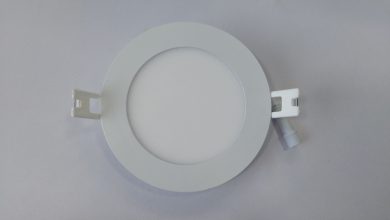Forex Robot Trading Strategies for Intermarket Analysis: Incorporating Multiple Markets

Introduction
forex robot trading has become increasingly popular among traders seeking to automate their trading strategies. One approach that has gained traction is intermarket analysis, which involves analyzing the relationships between different markets to make more informed trading decisions. In this article, we will explore how Forex robots can incorporate intermarket analysis into their strategies to potentially improve trading performance.
Understanding Intermarket Analysis
Intermarket analysis is based on the idea that different markets are interconnected and influence each other. For example, movements in the stock market can impact the currency market, and changes in commodity prices can affect bond markets. By analyzing these relationships, traders can gain insights into potential future price movements.
Incorporating Intermarket Analysis into Forex Robot Strategies
Forex robots can use intermarket analysis in several ways to improve trading outcomes:
- Correlation Analysis: Forex robots can analyze the historical correlation between different markets to identify patterns. For example, if the price of oil tends to rise when the US dollar weakens, a robot can use this information to adjust its trading strategy accordingly.
- Risk Management: Intermarket analysis can help Forex robots manage risk more effectively. By understanding the relationships between different markets, robots can adjust position sizes or hedge against potential losses.
- Diversification: Forex robots can use intermarket analysis to diversify their trading portfolios. By trading in multiple markets, robots can reduce risk and improve overall performance.
- Market Sentiment Analysis: Intermarket analysis can also help Forex robots gauge market sentiment. By analyzing the relationship between different markets, robots can get a better sense of whether traders are bullish or bearish, which can inform their trading decisions.
Example of Intermarket Analysis in Action
To illustrate how intermarket analysis can be incorporated into Forex robot strategies, consider the following example:
Suppose a Forex robot is programmed to trade the EUR/USD currency pair. The robot can use intermarket analysis to monitor the relationship between the EUR/USD pair and the price of gold. If the price of gold starts to rise, indicating increased market uncertainty, the robot can adjust its trading strategy by reducing its exposure to the EUR/USD pair to avoid potential losses.
Here are some benefits of using forex robots:
- 24/7 Trading: Forex robots can trade round the clock without the need for human intervention. They can monitor the market continuously and execute trades based on their programmed strategies, even when the trader is not available.
- Elimination of Emotional Bias: Emotions can often cloud judgment and lead to poor trading decisions. Forex robots operate based on predefined rules and algorithms, eliminating emotional bias from the trading process. They make objective decisions based on the programmed strategy, rather than being influenced by fear, greed, or other emotional factors.
- Backtesting and Optimization: Forex robots usually come with backtesting and optimization capabilities. Traders can test their strategies on historical data to assess their performance and make necessary adjustments. This allows for refining and optimizing trading strategies to improve their overall effectiveness.
- Speed and Efficiency: Forex robots can execute trades at high speeds, enabling them to take advantage of short-term market opportunities that may arise. They can scan multiple currency pairs simultaneously and react instantly to market conditions, which can be challenging for human traders.
- Diversification: Forex robots can trade across multiple currency pairs and strategies simultaneously, providing diversification in trading. This helps spread risk and potentially increases the chances of finding profitable trades.
- Discipline and Consistency: Forex robots strictly follow predefined trading rules and strategies, ensuring consistency in trading decisions. They help traders stick to their plan and avoid impulsive or emotional trading.
Conclusion
Incorporating intermarket analysis into forex robot trading strategies can help traders make more informed decisions and improve trading performance. By analyzing the relationships between different markets, Forex robots can adjust their strategies to adapt to changing market conditions and reduce risk. Traders interested in using intermarket analysis should consider working with a reputable Forex robot developer who has experience integrating this type of analysis into their strategies.
In conclusion, intermarket analysis offers a valuable tool for Forex robot traders looking to enhance their trading strategies. By understanding the relationships between different markets, traders can make more informed decisions and potentially improve their trading performance.








